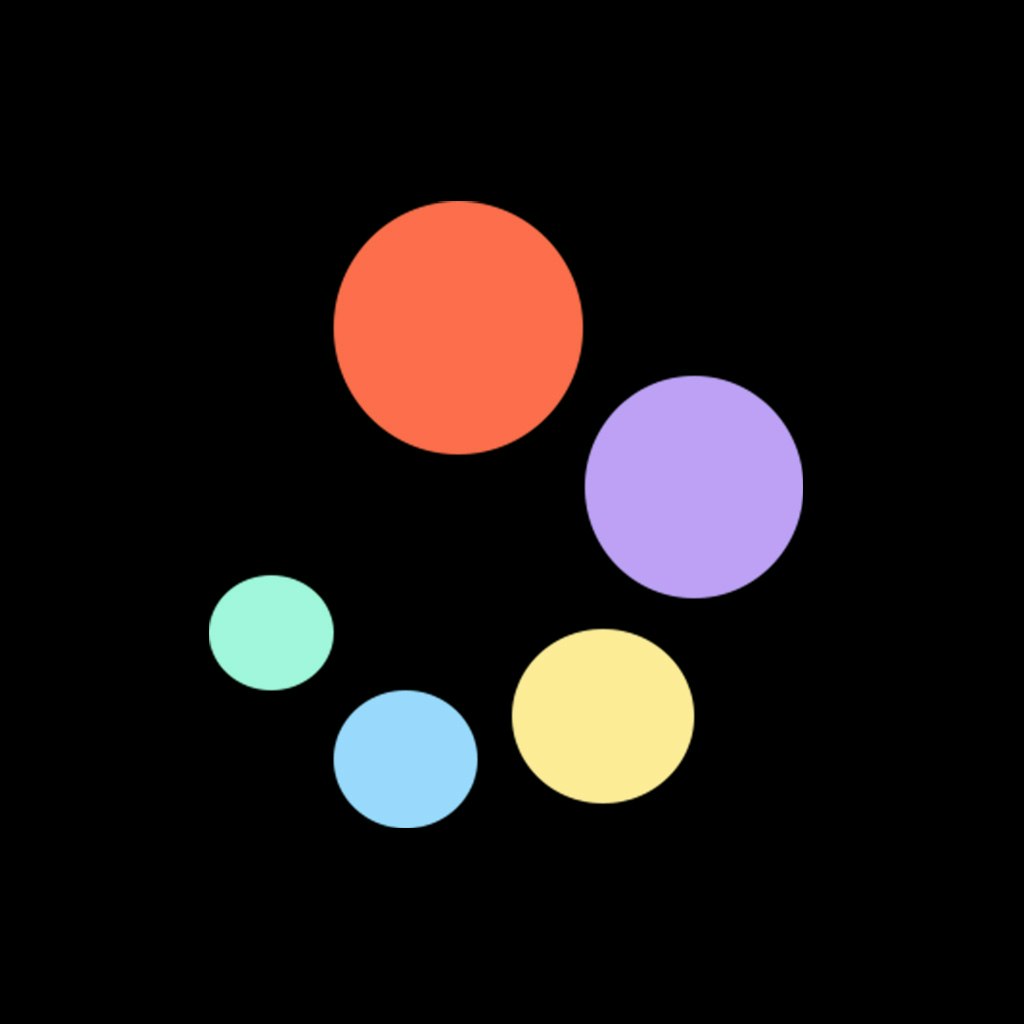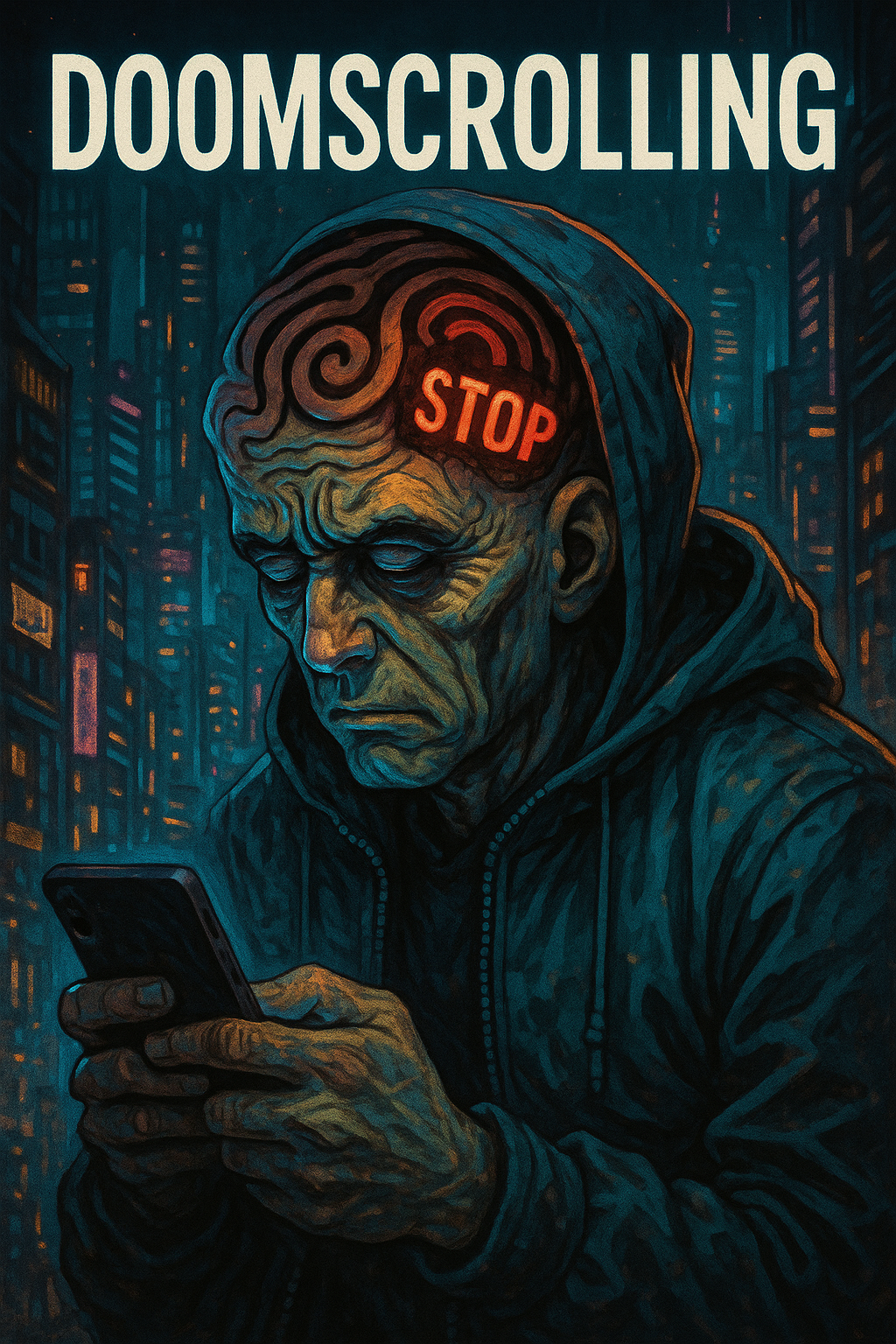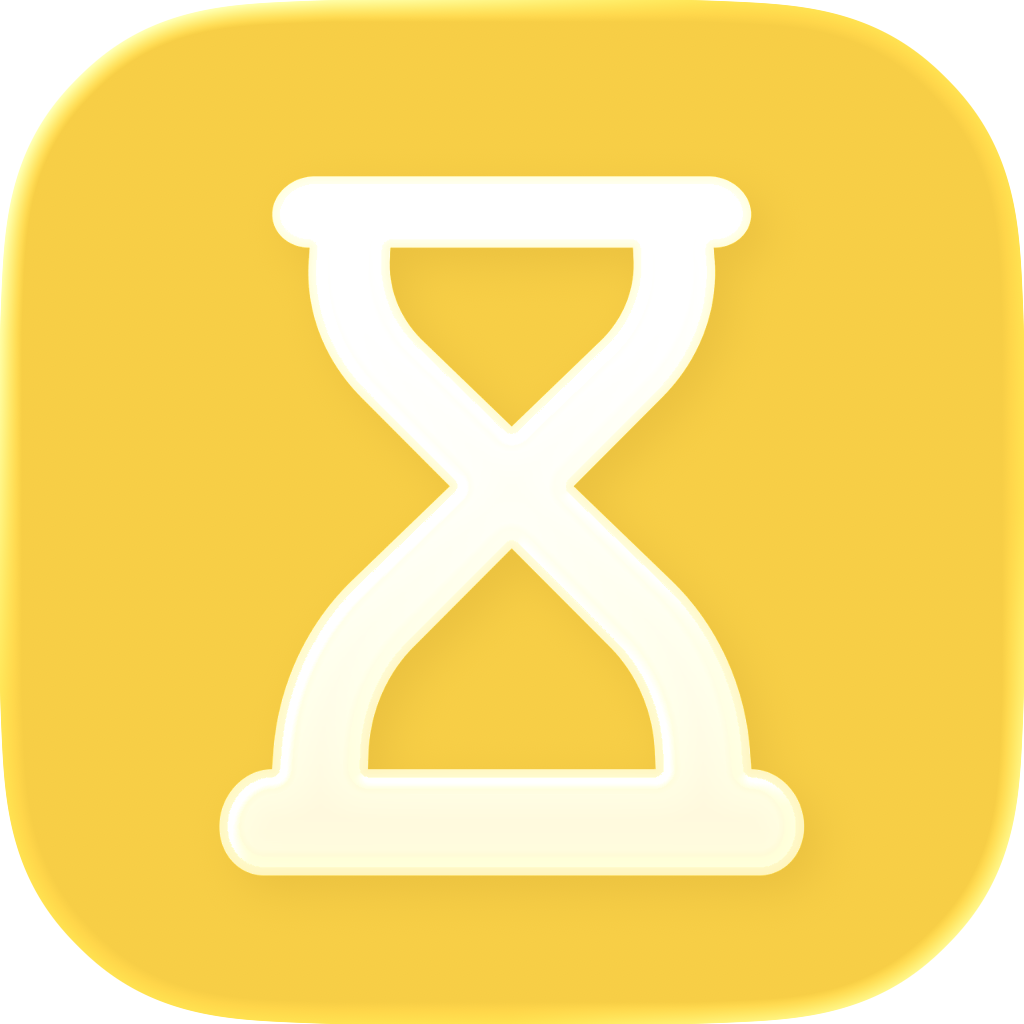Scroll Less
Alternatives
0 PH launches analyzed!

Scroll Less
No More Doomscrolling
2
Problem
Users struggle with excessive doomscrolling on social media and platforms, relying on old solutions like blocking apps, deleting social accounts, or dumbing down their phone, which remove both addictive and useful functional features.
Solution
A digital well-being tool that transforms platforms/socials into functional tools by removing addictive elements (e.g., infinite feeds) while retaining practical utilities (e.g., DMs, event updates). Users can reconfigure their apps to Cut the Feed, Keep the Function.
Customers
Professionals, remote workers, and entrepreneurs who rely on social platforms for networking/work but seek to reduce distractions and improve mental focus.
Unique Features
Non-intrusive adaptation of existing apps to retain utility (e.g., LinkedIn without infinite posts, Instagram without Reels), unlike blockers that restrict access entirely.
User Comments
Reduces compulsive scrolling without app deletion
Balances productivity and platform utility
Easy to customize for specific needs
Improves focus and mental clarity
No withdrawal from essential features
Traction
Featured on Product Hunt with 1k+ upvotes and 200+ reviews; early-access traction with 10k+ beta users.
Market Size
The global digital wellness market is projected to reach $3.2 billion by 2029 (Grand View Research, 2023).

Stop Doomscroll
Limit your time and scrolling on distracting websites.
11
Problem
Users waste excessive time scrolling on distracting websites like social media and news sites
Solution
Browser extension to help users manage online habits effectively
Allows users to limit their time and scrolling on distracting websites
Customers
Students
Professionals seeking improved productivity and focus
Alternatives
View all Stop Doomscroll alternatives →
Unique Features
Focus on managing online habits
Specifically designed to limit time and scrolling on distracting websites
User Comments
Helped me reduce my social media time significantly
Great tool for increasing focus and productivity
Simple and effective solution for curbing online distractions
Highly recommended for students and professionals alike
Easy to use and customizable for individual needs
Traction
No specific traction data found
Market Size
Global digital wellness market was valued at $6.2 billion in 2020 and is projected to reach $10.7 billion by 2026

Doomscroll Fog
Your gentle reminder to stop scrolling and move on
4
Problem
Users struggle with excessive scrolling on social media and news feeds, leading to wasted time and reduced productivity. Block content or track users
Solution
A Chrome extension that gently blurs feeds after a set time, allowing users to set scroll limits, snooze by site, and view daily usage. Does not block content or track you
Customers
Professionals, students, and remote workers seeking to reduce screen time without harsh restrictions, particularly those active on social media or news platforms.
Alternatives
View all Doomscroll Fog alternatives →
Unique Features
Non-intrusive blurring instead of blocking, privacy-focused (no tracking), customizable per-site limits, and a clean interface with usage analytics.
User Comments
Effective gentle reminder
Customizable and user-friendly
Respects privacy
Reduces anxiety from feeds
Seamless integration
Traction
Launched 2 weeks ago, 1.2k upvotes on ProductHunt, 5k+ installs, featured in 3 productivity newsletters
Market Size
The global digital wellbeing software market is projected to reach $2.3 billion by 2023 (Statista).

ScrollBump
iOS doomscroll break app
5
Problem
Users struggle to manage screen time effectively, relying on self-control or basic timers, which leads to ineffective habit change and prolonged doomscrolling.
Solution
An iOS app that uses scheduled breaks to interrupt endless scrolling, allowing users to set timed intervals for forced pauses while browsing social media or news feeds.
Customers
Social media addicts, remote workers, and students who frequently engage in mindless scrolling sessions.
Unique Features
Automatically pauses scrolling after user-defined intervals, with optional lock-out periods to enforce breaks.
User Comments
Helps reduce eye strain
Improves focus during work hours
Occasionally frustrating during urgent tasks
Simple UI but lacks customization
Effective for short-term habit adjustment
Traction
Launched 3 months ago with 2,500+ iOS installs, featured on Product Hunt (top 5 Product of the Day), founder has 1.2K followers on X.
Market Size
Global digital wellbeing market projected to reach $15.96 billion by 2030 (Grand View Research, 2023).

MoodShift: Mindful Screen Time
Replace Doomscrolling
3
Problem
Users struggle with excessive screen time and doomscrolling, relying on basic screen time trackers or willpower alone. Ineffective in mindfully reducing screen time leads to procrastination and negative mental health impacts.
Solution
A mindfulness-based screen time control tool that helps users track usage, set mindful goals, and replace doomscrolling habits. Mindful interventions and habit transformation via guided breathing exercises, focus modes, and habit streaks.
Customers
Professionals, students, and digital wellness enthusiasts aged 18-45 seeking intentional device usage while balancing productivity and mental well-being.
Unique Features
Combines behavioral psychology with mindfulness techniques, offering contextual nudges instead of blunt app blockers. Unique 'Mindful Scroll Breaks' replace compulsive habits with intentional actions.
User Comments
Reduced my screen time by 40% in 2 weeks
First app that actually changed my scrolling habits
Guided breathing helps me reset focus
Simple but powerful streak system
Design feels calming, not punitive
Traction
Launched 3 months ago with 2,800+ Product Hunt upvotes, 15k+ active users. Founder has 4.2k Twitter followers. Bootstrapped with $12k MRR from freemium model.
Market Size
Global digital wellness market projected to reach $3.5 billion by 2025 (Grand View Research). 87% of smartphone users report compulsive scrolling habits (Pew Research).

WikiTok IOS
Replace doomscrolling on the go
6
Problem
The current situation for the user involves spending time doomscrolling on the internet, which is an unproductive consumption of time.
The drawbacks of this old situation include: engaging in mindless, often negative content, which does not contribute to learning or personal growth.
Solution
A mobile app that provides access to Wikipedia articles through a swipe interface.
With this app, users can discover fascinating Wiki articles with a simple swipe, allowing them to learn something new every day by diving into encyclopedic rabbit holes.
Customers
Knowledge seekers, likely aged 18-35, who spend substantial time online and seek productive use of their time
Students interested in expanding their knowledge base.
Curious learners looking to replace doomscrolling with informative content.
Unique Features
Transforms the typical wiki reading experience into a TikTok-like swiping experience, uniquely engaging users with random articles.
Encourages a shift from consuming random, unproductive content to informative articles.
User Comments
Users appreciate the engaging format that turns learning into a swipe-based experience.
Some users find the random selection of articles refreshing and entertaining.
It serves as a productive alternative to aimless internet browsing.
There are occasional mentions of article relevancy issues.
Users enjoy the app as a daily learning tool.
Traction
The app has generated interest on ProductHunt with a notable number of upvotes.
It is gaining attention as a unique mix of educational content and modern app interface design.
Market Size
The global digital education market size was valued at $12.58 billion in 2019 and is expected to grow at a CAGR of 33.5% from 2020 to 2027.
Problem
Users are struggling with phone addiction and brain fog from doomscrolling, leading to reduced productivity and mental clarity. The old solution (unregulated phone usage) lacks mechanisms to incentivize healthy habits and creates dependency on instant dopamine hits.
Solution
A mobile app that uses 'brain credits' earned via completing tasks (e.g., meditation, exercise) to unblock apps, replacing impulsive scrolling with intentional habit-building. Example: Users must meditate for 5 minutes to unlock social media.
Customers
Professionals, students, and individuals with phone addiction seeking to improve focus, mental clarity, and productivity. Demographics: Ages 18-35, tech-savvy, urban dwellers with high screen time.
Unique Features
Dopamine detox via a gamified credit system, blocking apps until users complete real-world tasks. Combines habit-tracking with app control, rewarding discipline instead of punitive measures.
User Comments
Improves focus within days
Makes phone usage intentional
Reduces anxiety from endless scrolling
Easy habit integration
Brain credits feel rewarding
Traction
Launched on ProductHunt (2024), details unspecified. No public MRR/user data. Founder @yacineMTB has 158 X followers. Website shows basic MVP version.
Market Size
The global productivity apps market is valued at $58.6 billion in 2024 (Statista). Mental wellness apps specifically reached $6.2 billion in 2023 (Grand View Research).
Problem
Users struggle to control their screen time and overcome screen addiction due to lack of willpower. They often find it challenging to resist the temptation of doomscrolling and end up spending excessive time on their devices.
Solution
An app that locks users out of Screen Time, eliminating the need for willpower to combat screen addiction. It prevents users from bypassing limits or turning them off, ensuring a distraction-free experience. Users can set limits and forget about them, enabling a healthier relationship with technology.
Customers
People struggling with screen addiction, individuals aiming to manage their screen time more effectively, and anyone looking to reduce doomscrolling behavior.
Unique Features
Locks users out of Screen Time to prevent access to apps and websites, eliminates the 'Ignore Limit' option, restricts users from altering set limits, and provides a seamless way to create a barrier against excessive screen time usage.
User Comments
Keeps me accountable and helps me stay focused.
Finally, a solution that works! I've seen a positive change in my screen habits.
Great for breaking the doomscrolling cycle.
Simple yet effective in curbing screen addiction.
Highly recommended for anyone struggling with phone addiction.
Traction
Shutout has gained significant traction with over 100k downloads within the first month of launch, demonstrating its popularity among users seeking to reduce screen time.
Market Size
The global digital detox market is estimated to be worth $24.7 billion by 2026, reflecting the increasing need for solutions like Shutout to combat screen addiction and promote healthy digital habits.
Problem
Users struggle to maintain focus and avoid doomscrolling through self-discipline alone or basic app blockers, which lack social accountability mechanisms to enforce limits.
Solution
A mobile app that combines time limits on distracting apps with social accountability groups, enabling users to block access after set periods and request extensions from peers.
Customers
Students, remote workers, and professionals seeking structured focus support, particularly those prone to smartphone distractions in work/study environments.
Unique Features
Social enforcement mechanism where app access requires group approval for time extensions, creating peer pressure to maintain discipline.
User Comments
Effectively reduces procrastination
Group accountability increases commitment
Simpler interface than competitors
Occasional app compatibility issues
Motivating for team productivity
Traction
Launched 2 months ago with 1,000+ ProductHunt upvotes, 5k+ downloads, founder @johndoe has 2.3k Twitter followers
Market Size
Global productivity app market projected to reach $58 billion by 2026 per Statista
Problem
Users find themselves wasting excessive time on addictive applications, engaging in endless scrolling that detracts from productivity and mental well-being.
The drawbacks of this old situation are: increased screen time leading to reduced productivity and potential adverse effects on mental health due to constant exposure to social media content.
Solution
An app that helps users manage screen time by setting limits on the use of addictive applications, offering various forms of interruptions, such as pop-ups and interactive elements, to encourage breaks. Users can set a time limit for app usage and once reached, the app will instigate interruptions to instigate a break before allowing further use.
Customers
Younger demographics, including teenagers and young adults who heavily use social media and digital applications, alongside professionals prone to excessive screen time and individuals seeking to improve productivity and reduce digital consumption.
Unique Features
The solution offers a creative approach to interrupting addictive app usage by using annoyances such as pop-ups, rain sounds, and quirky elements like cats and screen time police to facilitate breaks.
User Comments
App successfully helps users limit screen time and breaks the habit of doomscrolling.
The annoying interruptions are effective but also humorous and enjoyable for some users.
Some users find it challenging to adapt initially but appreciate the long-term benefits.
Users appreciate the customizable nature of interruptions and break durations.
Overall positive response, with reports of increased productivity and reduced digital fatigue.
Traction
Being a newly launched app, it is gathering initial interest due to its unique approach. This app could potentially reach a significant user base given the universal problem it addresses, but specific user numbers or revenue metrics are not provided.
Market Size
The digital wellness apps market was valued at approximately $560 million in 2020 and is expected to grow as digital consumption increases globally.



